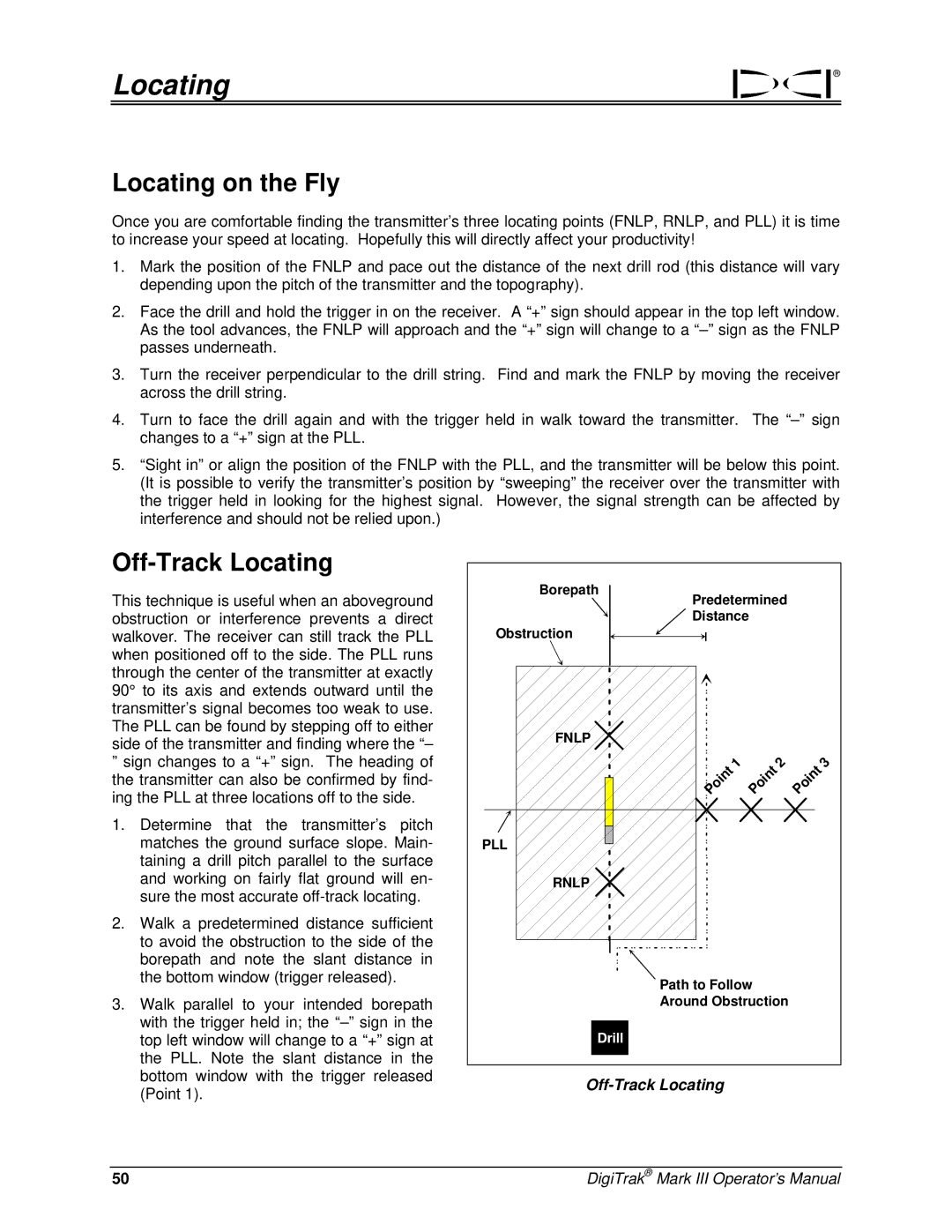
Locating | ® |
|
Locating on the Fly
Once you are comfortable finding the transmitter’s three locating points (FNLP, RNLP, and PLL) it is time to increase your speed at locating. Hopefully this will directly affect your productivity!
1.Mark the position of the FNLP and pace out the distance of the next drill rod (this distance will vary depending upon the pitch of the transmitter and the topography).
2.Face the drill and hold the trigger in on the receiver. A “+” sign should appear in the top left window. As the tool advances, the FNLP will approach and the “+” sign will change to a
3.Turn the receiver perpendicular to the drill string. Find and mark the FNLP by moving the receiver across the drill string.
4.Turn to face the drill again and with the trigger held in walk toward the transmitter. The
5.“Sight in” or align the position of the FNLP with the PLL, and the transmitter will be below this point. (It is possible to verify the transmitter’s position by “sweeping” the receiver over the transmitter with the trigger held in looking for the highest signal. However, the signal strength can be affected by interference and should not be relied upon.)
Off-Track Locating
This technique is useful when an aboveground obstruction or interference prevents a direct walkover. The receiver can still track the PLL when positioned off to the side. The PLL runs through the center of the transmitter at exactly 90° to its axis and extends outward until the transmitter’s signal becomes too weak to use.
Borepath
Obstruction
Predetermined Distance
The PLL can be found by stepping off to either side of the transmitter and finding where the “–
”sign changes to a “+” sign. The heading of the transmitter can also be confirmed by find- ing the PLL at three locations off to the side.
1.Determine that the transmitter’s pitch matches the ground surface slope. Main- taining a drill pitch parallel to the surface and working on fairly flat ground will en- sure the most accurate
2.Walk a predetermined distance sufficient to avoid the obstruction to the side of the borepath and note the slant distance in the bottom window (trigger released).
3.Walk parallel to your intended borepath with the trigger held in; the
FNLP ![]()
Point | 1 | int | 2 | Point | 3 |
|
|
| |||
| Po |
|
|
PLL
RNLP ![]()
Path to Follow
Around Obstruction
Drill
Off-Track Locating
50 | DigiTrak® Mark III Operator’s Manual |
